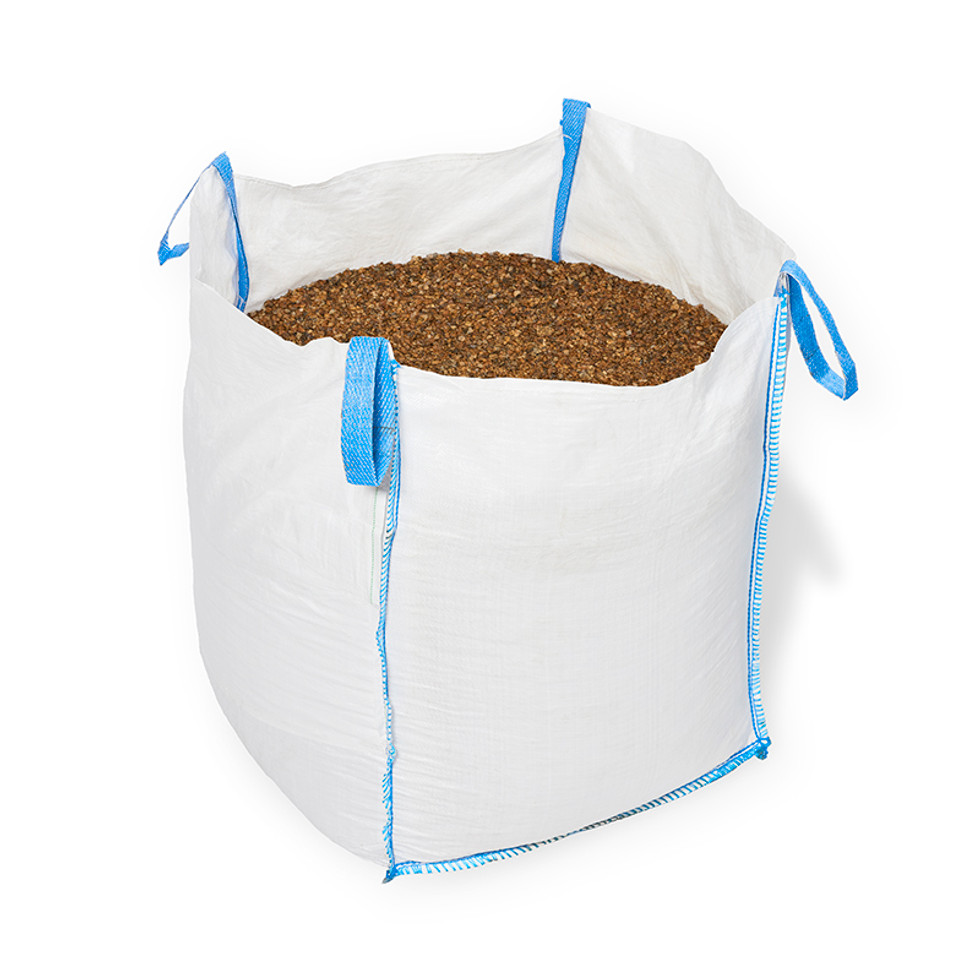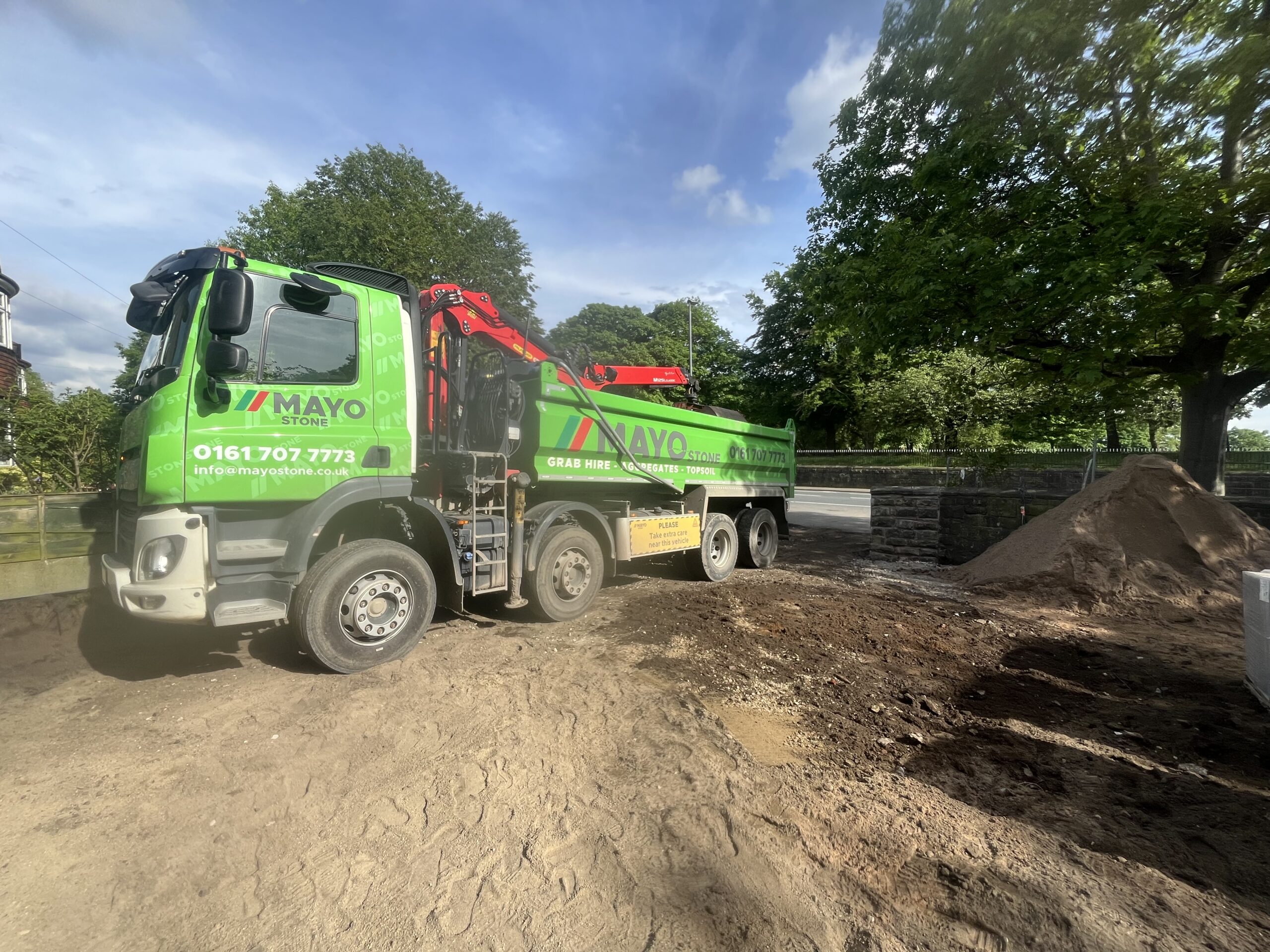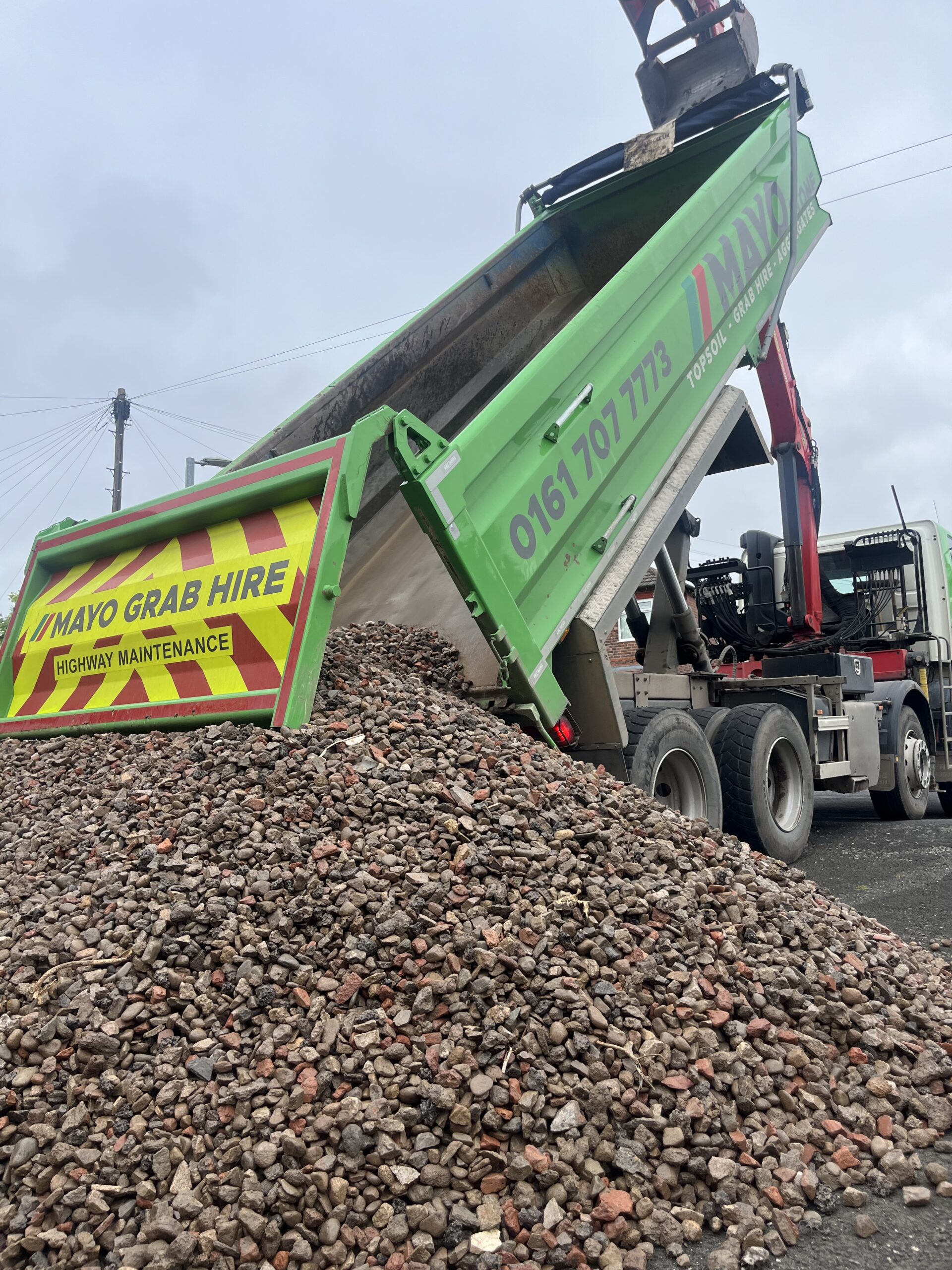
Menu

Aggregate bulk bags are an essential component in various industries, particularly in construction. These large, durable bags are designed to transport and store bulk materials such as aggregates, sand, gravel, and other construction materials and even cement. Understanding the different aspects of aggregate bulk bags can help you make informed decisions when it comes to their usage, safety, procurement, and responsible disposal such as recycling. In our Mayo Stone comprehensive guide, we will delve into the world of aggregate bulk bags, covering everything you need to know.
Aggregate bulk bags, also known as FIBC (Flexible Intermediate Bulk Container) bags or simply bulk bags, are large, flexible bags made from durable woven polypropylene fabric. These bags have a cubic shape and are designed to hold considerable amount of materials, ranging from 500 kg to 2000 kg, depending on their size and type.
They feature lift loops or tunnels that allow for easy and safe handling and transportation using forklifts, cranes, or other material handling equipment. The design of bulk bags ensures safe and efficient movement of materials, reducing the need for manual labor and increasing productivity.
Aggregate bulk bags are commonly used in various industries, including construction, agriculture, mining, and manufacturing. They provide a cost-effective and convenient solution for storing and transporting a wide range of materials, such as sand, gravel, stone and soil products.
Aggregate bulk bags are typically made from woven polypropylene fabric, known for its strength, durability, and resistance to tearing or puncturing. This heavy-duty fabric can withstand the rigors of handling and transporting bulk materials in various environments.
The woven polypropylene fabric used in bulk bags is UV stabilized, which means it can withstand prolonged exposure to sunlight without degrading or losing its strength. This makes bulk bags suitable for outdoor storage and transportation, even in harsh weather conditions here in Manchester.
In addition to the fabric, bulk bags may also include liners made from polyethylene or other materials to provide an extra layer of protection against moisture, contamination, or leakage. The liner helps to preserve the quality and integrity of the materials during storage and transportation.
Aggregate bulk bags come in a range of sizes and types to accommodate different materials and handling requirements. The most common sizes include cubic bags with capacities of 1 cubic meter, 1.5 cubic meters, or 2 cubic meters.
There are also specialized bulk bags, such as conical bags, which are tapered at the bottom to facilitate easy and efficient discharge of the aggregates. These bags are commonly used for materials that tend to bridge or hold moisture such as cement.
Understanding the specific requirements of your project and the characteristics of the materials will help you determine the most suitable size and type of bulk bag for your needs.
When selecting a bulk bag, it is important to consider factors such as the weight and density of the materials, the available storage space, and the equipment used for handling and transportation. This will ensure that you choose a bag that can safely and efficiently accommodate your materials and meet your operational needs.
In addition to size and type, bulk bags may also come with various customization options, including different colors, printing of logos or labels, and the addition of document pockets for easy identification and documentation of the contents.
The construction industry relies heavily on the use of aggregate bulk bags to transport materials efficiently and safely. These bags provide a practical solution that eliminates the need for manual handling and reduces the risk of injuries associated with moving heavy materials such as aggregates, sand, gravel and soils.
When it comes to transporting bulk materials, such as sand, gravel, or concrete, aggregate bulk bags offer numerous benefits. Their design allows for easy loading onto trucks, trailers, or other transportation vehicles. Once loaded, these bags can be securely fastened to prevent shifting or spilling during transit, ensuring that the materials arrive at the construction site intact.
One of the key advantages of using aggregate bulk bags is their cubic shape, which maximizes the use of space. This means that more materials can be loaded onto a single truck or trailer, resulting in more efficient transportation. Additionally, the cubic shape facilitates easy stacking and unloading, further enhancing the efficiency of the construction process.
Aggregate bulk bags play a crucial role in the construction industry by providing a practical and efficient solution for transporting bulk materials. They eliminate the need for manual handling and reduce the risk of injuries associated with moving heavy materials.
These bags are easy to load onto trucks, trailers, or other transportation vehicles and can be securely fastened to prevent shifting or spilling during transit. The cubic shape of the bags also maximises the use of space, allowing for efficient loading and unloading. We recently supplied a site with our light certified BS3882 topsoil which was unloaded from our truck by a site tower crane for use on the buildings rooftop.
Moreover, aggregate bulk bags are designed to withstand the rigors of transportation. They are made from durable materials that can withstand the weight and pressure of the materials they carry. This ensures that the bags remain intact throughout the journey, preventing any loss or contamination of the materials.
Another advantage of using aggregate bulk bags is their versatility. They can be used to transport a wide range of materials, including aggregates, construction debris, and even hazardous substances. This versatility makes them an essential tool for construction companies, as they can rely on these bags for various projects and materials.
Using aggregate bulk bags offers significant efficiency and cost advantages in construction projects. By eliminating the need for individual bags or loose materials, bulk bags streamline the handling process, saving time and labor costs.
Furthermore, the use of bulk bags minimises material waste and spillage, reducing cleanup efforts and material losses. These bags are designed to be leak-proof, ensuring that the materials stay contained and protected during transportation. This not only saves money but also helps to maintain a clean and safe work environment.
Additionally, aggregate bulk bags are reusable, making them an eco-friendly and cost-effective option for construction companies. After the materials are unloaded, the bags can be cleaned and stored for future use. This eliminates the need for constant repurchasing of disposable bags, resulting in long-term cost savings.
In conclusion, aggregate bulk bags play a vital role in the construction industry by providing a practical, efficient, and cost-effective solution for transporting bulk materials. Their ability to streamline the handling process, minimise waste, and offer reusability makes them an invaluable tool for construction companies striving for efficiency and sustainability.
Safe handling and storage practices are crucial when working with aggregate bulk bags to prevent accidents and ensure the integrity of the materials. When lifting or transporting bags, it is important to follow recommended weight limits and use appropriate lifting equipment, such as forklifts or cranes.
Additionally, storing the bags in a clean, dry, and well-ventilated area helps to maintain the quality of the materials and prevent damage or contamination. Avoid stacking bulk bags too high to prevent the risk of instability or collapse.
Before lifting or transporting aggregate bulk bags, inspect the bags for any signs of damage, splits or wear. Ensure that the lift loops or straps are in good condition and securely attached to the bag.
During transportation, ensure that the bags are properly secured to the vehicle or lifting equipment to prevent shifting or falling. Slow and cautious driving is essential to minimise the risk of bags toppling over or causing accidents on the road.
When buying aggregate bulk bags, quality is paramount. Look for bags that adhere to industry standards and have robust construction, including reinforced seams and strength-tested fabric.
Check for any relevant certifications or labels that indicate the bags’ compliance with safety and quality requirements. It is also recommended to inspect the bags visually and physically to ensure they meet your specific needs.
Choosing a reliable supplier like Mayo Stone Supplies is crucial to obtaining high-quality aggregate bulk bags. Consider factors such as the supplier’s experience, reputation, and their ability to meet your specific requirements.
Look for suppliers that offer customization options, have a proven track record in delivering on-time, and provide excellent customer service. Comparing prices, requesting samples, and seeking feedback from other customers can help you make an informed decision.
We love our plant here at Mayo Stone, Considering the environmental impact of aggregate bulk bags is essential for sustainable construction practices. Improper disposal of these bags can contribute to waste accumulation and pollution.
While the materials used in bulk bags are generally recyclable, contamination from the transported materials may affect the recyclability. It is crucial to separate and properly dispose of any non-recyclable components, such as liners or contaminants, in accordance with local regulations.
To responsibly dispose of aggregate bulk bags, consult local waste management or recycling facilities to find out their specific requirements. Some facilities may accept clean, empty bags for recycling, while others may require bags to be free of liners or contaminants.
Consider implementing a bag recycling program within your organization or project, encouraging reuse or recycling. This helps to reduce the demand for new bags and contributes to a more sustainable construction industry.
By understanding aggregate bulk bags and following the recommended practices, you can ensure their safe and efficient usage, contribute to cost-effectiveness, and minimise the environmental impact. Whether you are involved in construction, landscaping, or any industry requiring the transportation of bulk materials, harnessing the benefits of aggregate bulk bags will undoubtedly enhance your operations.
Now that you’re equipped with the knowledge of aggregate bulk bags and their importance in construction and landscaping, it’s time to take the next step. With Bulk Aggregate Supply, you can expect a white-glove service that simplifies your aggregate procurement process. Whether you’re working on a small driveway or a large civil construction project, we deliver high-quality materials directly to your site across Greater Manchester and the North West. Experience our exceptional customer service and quality recycled and quarried aggregates by Mayo Stone either loose tipped or bulk bags.
Call our experienced and friendly team today for more information or to order for your project on 0161 707 7773.





